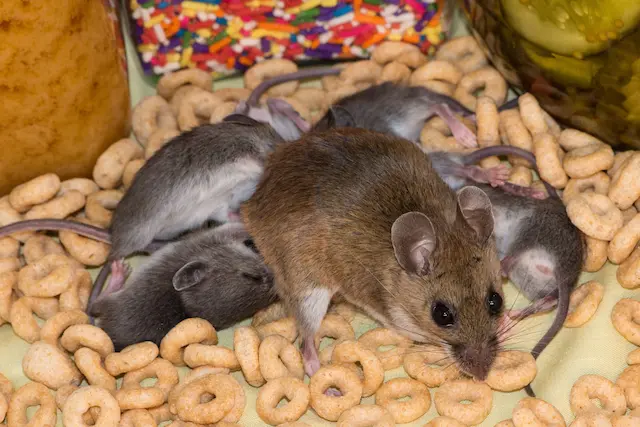Few organisms illustrate the concept of prodigious reproduction as vividly as the house mouse (Mus musculus) in the intricate ballet of nature. These minuscule rodents, which are frequently unwelcome in our homes, have mastered the art of reproduction, resulting in rapid population growth that can challenge even the most vigilant pest control measures. Examining the world of mouse mothers and their young sheds light on their astounding reproduction rates and the difficulties they pose for householders.
The reproductive capabilities of house rodents are nothing short of astounding. Female house mice can attain sexual maturity as early as six weeks of age, and their estrus cycle is astonishingly brief, lasting only four to five days. This frequent cycle, coupled with their ability to mate year-round, can result in rapid population explosions.
Upon becoming pregnant, a female mouse will typically carry her developing offspring for approximately 19 to 21 days before giving birth. There can be anywhere from five to twelve puppies in a typical litter, with rare instances involving as many as fifteen or more. The infant puppies are blind, hairless, and completely reliant on their mother for food and care.
The mother mouse’s nurturing function is both impressive and resourceful. She assiduously cares for her young for up to three weeks, feeding them several times per day. As the puppies mature and become more independent, they begin to experiment with solid foods and wean themselves off their mother’s milk.
Nevertheless, the cycle continues. Female rodents are known for a phenomenon known as “postpartum estrus.” This unique trait enables a rodent female to become pregnant again within two days of giving birth. This overlapping of pregnancies is a major contributor to their accelerated reproduction rates. Consequently, a female rodent may have multiple litters within a single season.
The implications of these high reproduction rates are substantial, particularly in terms of managing populations of domestic mice. Unchecked, a single pair of mice can rapidly multiply into dozens in a matter of months. Their ability to use even the tiniest openings to enter our dwellings and their resourcefulness in locating food sources exacerbate the difficulty of controlling their population.
Infestations of house mice require a multifaceted strategy that includes prevention, detection, and intervention. Preventive measures, such as securing entry points, removing food sources, and maintaining proper sanitation, play an essential role in reducing the likelihood of infestations establishing themselves. Regular inspections can help detect early indications of activity, allowing for prompt response.
For the effective management of house rodent populations, professional pest control services are often required. Experts in pest control have the knowledge, experience, and equipment to identify entry points, implement targeted treatments, and advise on long-term prevention strategies. Their expertise is especially important in eradicating infestations that have already taken root.
The reproductive prowess of house mice is conclusive evidence of their remarkable adaptability and survival instincts. Their ability to breed year-round and produce multiple litters highlights the difficulty they present to householders and pest control efforts. Understanding the dynamics of mouse mothers and their offspring emphasizes the significance of proactive prevention and prompt intervention to ensure that these prolific breeders do not extend their unwanted stay.
Affordable, accessible, and high-quality mouse removal services in Bowmanville. We remove mice from private and commercial properties with the help of our licensed and insured technicians that have years of experience.

